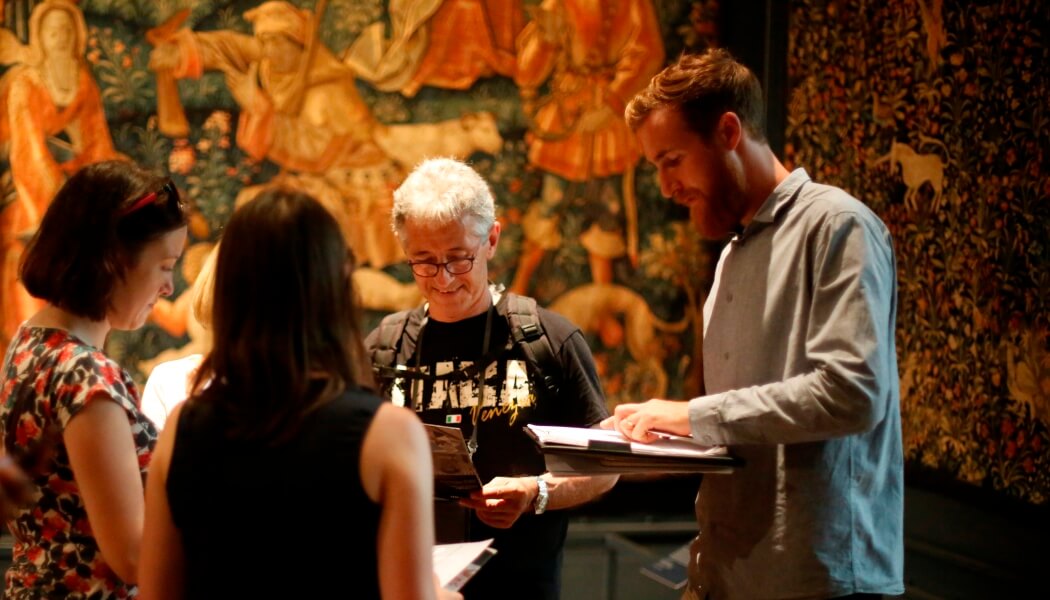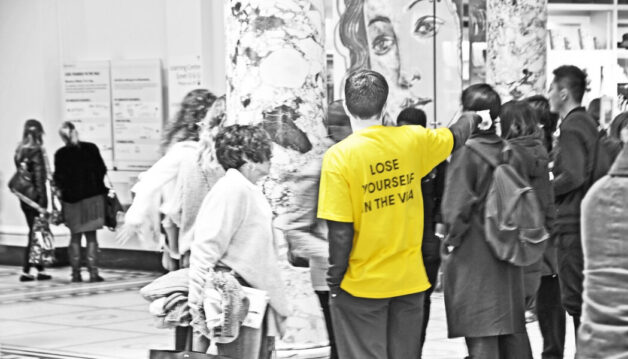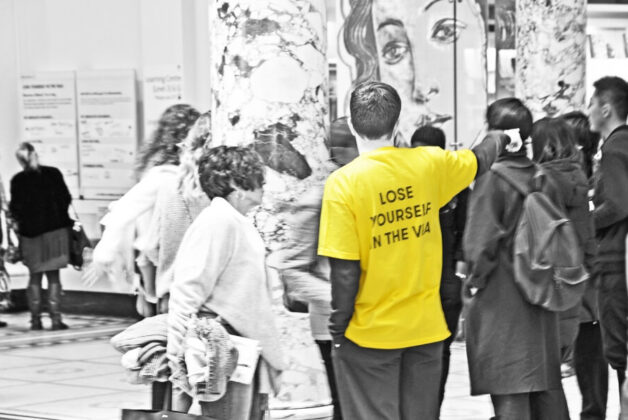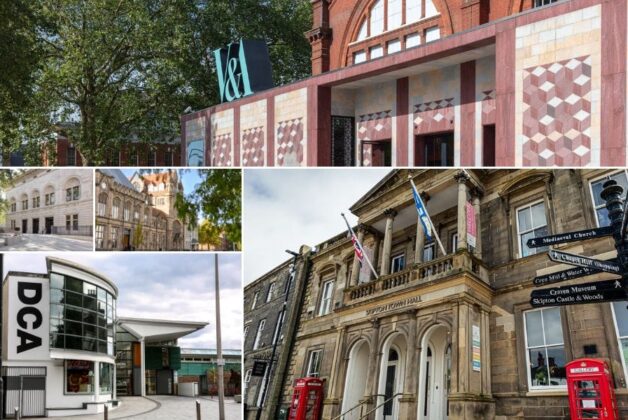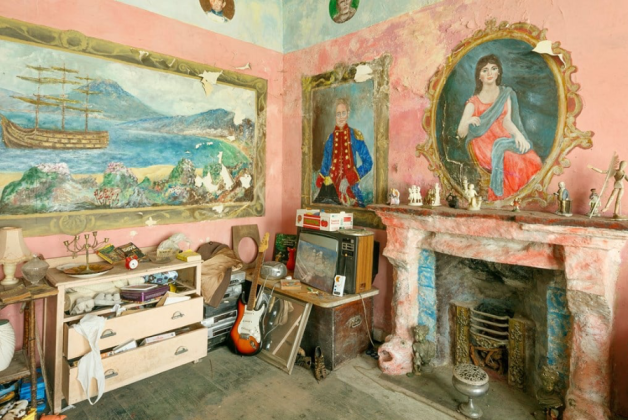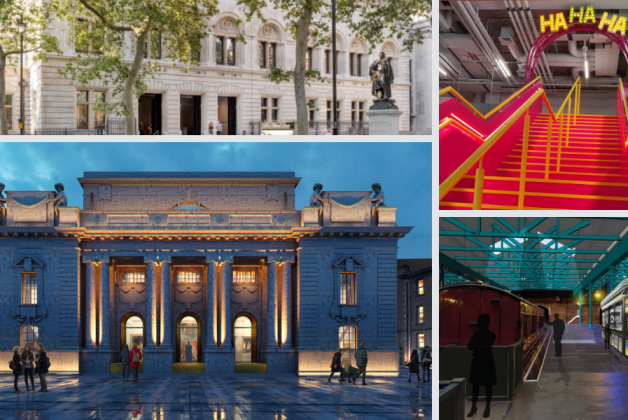By Adrian Murphy. Main Image: Engaging with visitors brings the most valuable insights say CCD Design & Ergonomics
Museums and heritage attractions are competing for visitors with other leisure attractions more than ever and the more they know about their visitors or potential visitors the better informed they will be to offer the experience they want (and remove the ones they don’t want)
The importance of visitor insight to museums and heritage attractions is therefore a prerequisite for a healthy relationship with audiences and, as public funding becomes scarcer, a robust future of resilience and relevance
Earlier this week Alva released its visitor figures for 2018, which showed a 9% overall increase in visitors to the UK’s leading visitor attractions. Its chairman Bernard Donoghue said that these numbers are just one benchmark but creativity, partnerships and the actual experience are the most important. And crucial to enabling museums to be successful and meaningful is the visitor insight that takes these visitors habits, feedback and behaviours towards more relevant programming.
Using visitor research and analysis, says The Audience Agency, which last year published its Museums Audience Report, ‘can identify visitor behaviour trends across a season, the impact of particular programming, engagement approaches and other external factors’. This all helps museums make better informed decisions. For example the report found that museum audiences are more evenly spread than other artforms across High attendees (30%) Medium (45%) and Low (25%). And free entrance museums attract a higher proportion of visitors who are less culturally engaged and have a higher proportion of visitors aged under 35.
Below Advisor finds out from The Audience Agency’s Chief Executive Officer, Anne Torreggiani and Head of User Partnerships, Margot Walker why visitor insight is so important and why it is crucial that, as an Arts Council Sector Support Organisation, it makes available support and resources for museums.
We also explore visitor insight from the perspective of CCD Design & Ergonomics in an Ask the Expert Q&A with Chris Girling, Head of Wayfinding, and Phil Nutley, Head of Experience Design who explain how it can not only produce better content but also better decision-making for future development.
Q&A with The Audience Agency's Chief Executive Officer, Anne Torreggiani and Head of User Partnerships, Margot Walker
How has The Audience Agency’s role changed since becoming a Sector Support Organisation and what are its main aims regarding its work with museums and heritage attractions?
The Audience Agency has been delivering the Audience Finder service to museums and heritage organisations since 2015. Becoming a Sector Support Organisation, rather than being project-to-project funded, has enabled us to take a longer-term approach, more focussed than ever on putting our users firmly at the centre of delivery and planning.
The launch of the Audience Finder User Community has been enthusiastically received, enabling us to build a stronger dialogue with our user community, facilitated through regular one-to-one sessions and live events. These developments will be augmented this year with a new online forum and programme for super-users, who will be helping to raise the bar in terms data application and insight development.
The net effect should be to ensure that we do what our users need us to do and increase the ease, confidence and frequency with which they can use Audience Finder to share and apply audience insight in practical ways. Additional funding from Arts Council Wales and Creative Scotland extends that network even further, bringing new functionality to the arts, culture and heritage UK community.
The Audience Agency is also working much more closely than ever before with other Sector Support Organisations, especially through a new forum of museum-supporting SSOs working together to streamline and augment services. We are forming, for instance, regional links with Museum Development Network and working on projects with membership organisations such as CVAN, AIM, AMA and Artfund to bring better value to museums.
All this sector-wide dialogue is helping us to understand the many and varied ways in which different organisations can understand and use Audience Finder data, and we want to continue developing the service so that the majority of museums can enjoy the proven benefits of using data to be more visitor-focused, resilient and collaborative.
How important is visitor insight to museums and what are some of the main benefits such as resilience and better programming?
Museums are like any other customer facing business. Obviously, it’s well-nigh impossible to grow your visitor base, or to plan and programme to meet visitor needs, without having a regular feed of visitor insight.
Using visitor research and analysis can identify visitor behaviour trends across a season, the impact of particular programming, engagement approaches and other external factors. It can help us develop clearly differentiated visitor journeys, appealing to a diverse range of audiences.
Insight is the essential ingredient in any smart, audience-friendly innovation. In practice, however, accessing high-quality insight on a regular basis can be very challenging, especially where time, resources and capacity are stretched. Audience Finder is designed to fill the gap – the data and reporting is very straight forward, but it offers lots of context – averages, comparative information etc – and can often be the necessary spring board for carrying out more exploratory, in-depth analysis.
Case in Point | What is Resilience anyway?
In what ways has the Museums Audience Report reflected this and how will you continue this kind of research in the future?
The Museums Audience Report has been well received as a ‘state of the nation’ report on contemporary audiences. Some of it confirms our hunches about museum audiences but there are some surprises in there too. We are committed to publishing sector audience reports biennially – coming up are reports on visual art audiences and literature audiences.
Presenting these sector insights has also opened up other avenues for exploration, as museums have responded by asking us to develop and expand upon the available analysis – e.g. enabling organisations to compare their data within sub-region by artform, or introducing more granularity by artform type based on primary collections such as military, industry, natural sciences and visual art.
Other museum networks have also called for more issue-based analysis, such as looking at paid-and-free entry issues, social impact measurement and a focus on archives. Where we can, we’ll try to find resources to make that possible, or look to include these as potential new features in Audience Finder over the coming months and years.
What have been some of the major developments/innovations in collecting visitor insight, data and compiling research over the past five years and how have they aided museums?
Rather than collecting yet more disparate data, we’re particularly interested in looking at the integration of large data sets, which can bring spectacular new insights. Audience Spectrum, for example, combines the DCMS Taking Part data, with census and other public information and new data from Audience Finder to reveal the fault lines between very distinctive groups of cultural engagers in the population.
We’re looking forward to a refresh of Audience Spectrum this year – using the full Audience Finder data set built over the past 3 years – adding in new publicly available data sets. This will give us more insight into how museums and heritage sites can address the need to attract more donors, more international tourists, more premium guest, while also becoming more inclusive and offering a better invitation to less culturally confident potential visitors.
On a similar theme, we’re looking forward to the integration of social and mobile data – there are some amazing new technologies scooping up in-museum data – from the Smartify app to beacon technology and micro-location tracking. We should all be watching those museums who are experimenting with these new approaches and finding fabulous user-centric solutions as a result.
Ultimately though, the Holy Grail is to use sophisticated data insights in order to personalise the offer instantaneously. Watch this space (for a while!).
In what ways has The Audience Agency been part of these developments and made them available to museums?
Audience Finder is a free resource open for museums of any scale to use to collect, compare and apply visitor data. It is the biggest integrated dataset of cultural attenders in the world. The ability to link ticketing data means that we now have information on the attendance habits of 14 (out of 26) million households in the UK. Users have reported sourcing new funding, new donors, new income and new audiences thanks to Audience Finder.
But we’re still at the start of the journey – we want to make Audience Finder not just more solutions focused, but more focused on the solutions our users actually say they need. Our role is to bring the best of new big data development to the sector and we have a range of pilot projects in the pipeline that will help us to do that.
A host of resources are avaialble on The Audience Agency’s website.
What are some of the challenges museums face when trying to gain better visitor insight and how are they overcome?
Museums need to consider what it is they really need to know and how the information gathered will be used. Having a clear data aspect to your audience strategy is key – we often find a little time spent mapping data to purpose is very valuable and can help people see through the data tsunami. Audience Finder, for example, takes a predominantly quantitative approach to collecting data on everyday audiences and it may be that organisations need to combine this with other more qualitative insights, or more in-depth studies.
The main practical challenge museums tell us they face with quantitative research is to ensure the collection of a representative sample. For Audience Finder we ask museums to undertake 380 surveys per annum (or their opening season if less) and for this to reflect visitor flow i.e. if 50% of visitors attend at the weekend then the survey sample should adhere to this. If research is being undertaken in house by staff or volunteers it is important to train them and to monitor responses to ensure there is no bias in terms of who is approached and that the quality of responses is accurate.
Resourcing research can be a challenge to museums, as can maintaining interest over a period of time. We find, however, that for those organisations who do manage to embed audience insight into their overall organisational development strategy, the data is a natural resource to build on. To this end The Audience Agency offers data strategy and mapping services, support with data collection, free set-up advice, guidance and technical support, fieldworker-training and more …
For more resources see our tools
Can you give a brief example of a recent project The Audience Agency had worked on, where a museum or heritage organisation has benefitted from your expertise and what this has involved?
Beyond Audience Finder itself, The Audience Agency conducts regular evaluation and audience development projects with individual museums and heritage organisations (which can be seen on the website with the tag Case In Point). A couple of more recent examples include:
Case in Point | English Heritage Online
English Heritage cares for over 400 historic buildings, monuments and sites bringing the story of England to life for over 10 million visitors each year. Over the last few years the digital content team has been developing specific curatorial content (as distinct from marketing content), in order to enrich visitor experiences with authoritative historical context and showcase the work of English Heritage curators, historians and conservators. The Audience Agency was commissioned to explore how users engaged and interacted with this type of content, understand whether it resonated with them and asses it’s overall effectiveness. The resultant detailed report presented the variations and similarities across the different audience groups and included specific recommendations for the digital content team, to assist them in continuing to develop the effectiveness of their online content.

